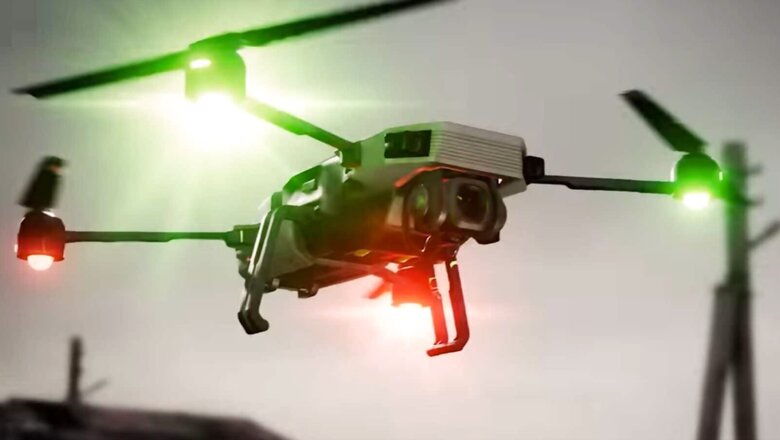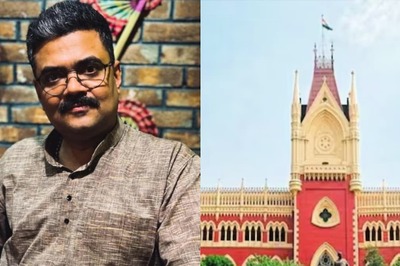
views
Two spectators were injured after a drone, which was part of the tableau of the Madhya Pradesh agriculture department, fell on them in the Republic Day function held at a stadium in Jabalpur.
The drone, displaying the spraying capability for agricultural operations, was being flown by engineer Abhinav Singh, who had reportedly been working on the technology for over six years. The drone was a Quadcopter, meaning it had four motors and four propellers. It was said to be carrying 30 litres of spray liquid when the accident occurred, leading to the injured being rushed to hospital.
So what went wrong? On close analysis of the video, I noticed this Quadcopter was flown with a Chinese-made controller which would be transmitting on 2.4 GHz. The drone was flying in an area where broadband and Wi-Fi jammers were likely used due to VVIP and VIP movement. It is important to note that Wi-Fi also works on 2.4 GHz.
Sudden loss of control on a drone happens due to three reasons. Firstly, loss of control command from the ground controller which could lead to the drone not responding at all. In this particular incident case, this reason could be ruled out as the drone suddenly flipped on its back.
Second reason could be motor failure. In a Quadcopter, even if one motor fails, the other three motors cannot compensate for the extra torque that is produced by one extra clockwise or counterclockwise rotating motor.
The third reason could be spike in signal going to the electronic speed controller of the motor. The spike could be electromagnetic or electrical. In a jammer-prone environment, this could have been the reason why the drone suddenly lost control and flipped on its back.
A fourth possible reason could be failure of a propeller. This does not seem to be the case in the Jabalpur incident as the propeller was intact until it hit the people on the ground. Failure of airframe can also sometimes lead to such catastrophic failures. However, such failures are rarely seen and in this incident, this reason can be ruled out as well since the drone was intact on impact.
So why did people get hurt? Heavy lift drone is rarely flown with four rotor configuration. More often than not, heavy lift drones are flown with either six or eight rotor configuration. The reason is simple. If any motor fails or its associated electronic speed controller or other equipment fails, the other motor can compensate for the extra torque provided by the opposing motor of the field motor.
In this case, flying a drone in the four rotor configuration was a mistake. Now the question arises as to why was the mission was allowed to fly in a four motor configuration at all. The drone directorate may not have been consulted by Abhinav Singh or the agricultural ministry or anyone from organising committee. If the drone directorate was consulted, they would have advised to fly the drone in a configuration of Hexacopter or Octacopter.
I understand the need for various ministries to showcase this emerging technology called drones. Anyone with a little bit of knowledge of how to put parts together can create a drone today and that is what precisely happened in this case. DIY engineers without proper foresight, guidance and training went about creating this drone and flying it without understanding the nuances of flight safety and mission safety.
Coming to the aspect of mission safety, even if the drone was in a configuration of six or eight rotors, it still cannot be flown over people as per the rules, without proper permissions. This aspect was apparently totally neglected.
In aviation, flight safety is paramount. Drone directorate and drone rules were created for a reason; to harness the immense potential of drones while keeping national security and personal safety in mind. Which is why the drone directorate comes under the Ministry of Civil Aviation and not under any other ministry. The Ministry of Civil Aviation possesses the requisite expertise in controlling, giving permission, ensuring aircraft integrity while harnessing the immense potential of the drones.
I also wonder if there has been proper drone pilots training and whether this drone was certified by QC and had the requisite papers before it commenced flying.
A drone pilot has to be more responsible while flying more than a pilot in the cockpit as the chances of inflicting damage to others are much higher in UAV flying.
Let this incident be a lesson for all event organisers, who, in their enthusiasm to showcase a particular technology, do not coordinate with requisites ministries before embarking on such missions.
Squadron leader Varsha Kukreti (Retd) was commissioned into the Indian Air Force in 1997. She is the founder and CEO of AutoMicroUAS Pvt Ltd and Aeronne Dynamics Pvt Ltd. The views expressed in this article are those of the author and do not represent the stand of this publication.
Read all the Latest Opinions here



















Comments
0 comment